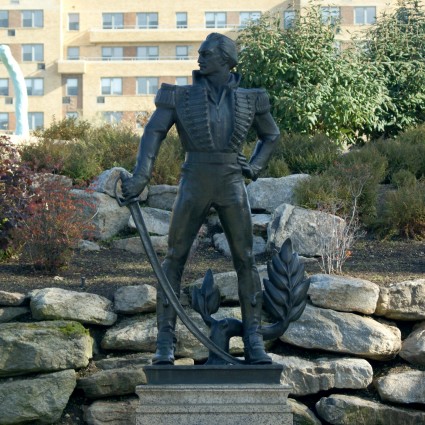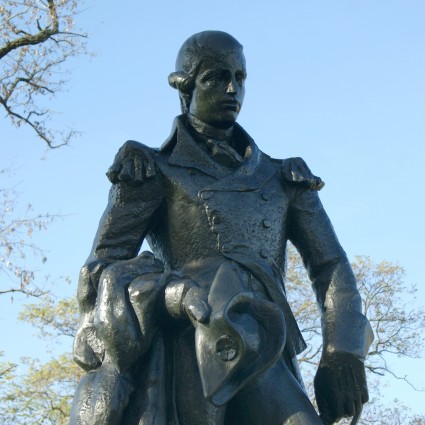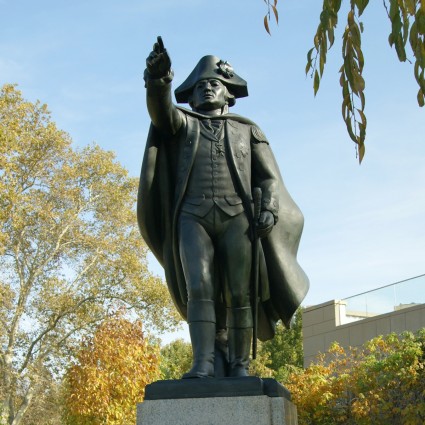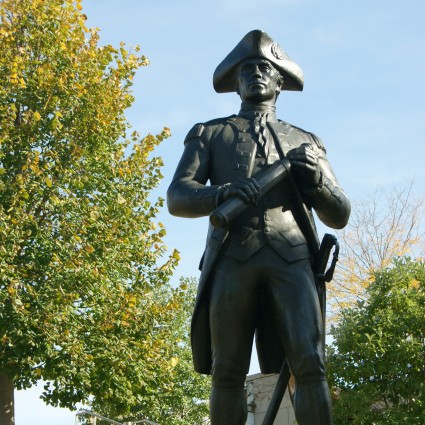At A Glance
Commissioned as part of the William M. Reilly Memorial
Nathanael Greene is the only native-born American Revolutionary War hero to be honored at the William M. Reilly Memorial
He served in the battles of Trenton, Brandywine, and Germantown, and was appointed to quartermaster general
He commanded forces in the South that drove the British back toward the coast at Charleston and became known as “the man who saved the South”
Artist Lewis Iselin, Jr. created sculpture for the U.S. military cemetery in Suresnes, France after World War II
Nathanael Greene is the only native-born hero to be honored at the William M. Reilly Memorial. Scion of a Rhode Island Quaker family, he served in the battles of Trenton, Brandywine, and Germantown during the American Revolutionary War.
…he became known as “the man who saved the South”
During the winter at Valley Forge he was appointed quartermaster general, in which capacity he helped to improve the supply system. Late in the war he commanded forces in the South that drove the British back toward the coast at Charleston. For this campaign he became known as “the man who saved the South.” Lewis Iselin, Jr. created sculpture for the U.S. military cemetery in Suresnes, France after World War II, yet his contemplative figure of Greene is perhaps the least martial of the sculptures in the Reilly Memorial.
William M. Reilly Memorial
In his will of 1890, General William M. Reilly of the Pennsylvania National Guard established a trust fund for the purpose of creating monuments to American Revolutionary War heroes. The earnings were to accumulate until the fund became large enough for the memorial to be realized. In 1938, when the fund reached the necessary level, the trustees set the project in motion, and four bronze statues were installed by 1947. Although Reilly had requested a site near Independence Hall, the larger-than-life figures were placed instead on the terrace northwest of the Art Museum. C. Louis Borie, Jr., one of the architects of the museum itself, designed the granite bases.
As specified in the will, these first four sculptures commemorated Montgomery, Pulaski, von Steuben, and Lafayette, volunteers from other lands who “threw themselves into the cause of emancipating the colonies from the yoke of British tyranny.” In addition to honoring their achievements, General Reilly wrote, the memorial would express “appreciation and gratitude to the lands which gave these liberty-loving men their birth.”
By the terms of the will, funds remaining after the erection of the four original monuments were to be applied to other statues of Revolutionary heroes. Accordingly the trustees commissioned bronze figures of John Paul Jones and Nathanael Greene, which were installed in 1957 and 1961, respectively. The six sculptures are arranged in two facing rows.
Adapted from Public Art in Philadelphia by Penny Balkin Bach (Temple University Press, Philadelphia, 1992).
RESOURCES:



